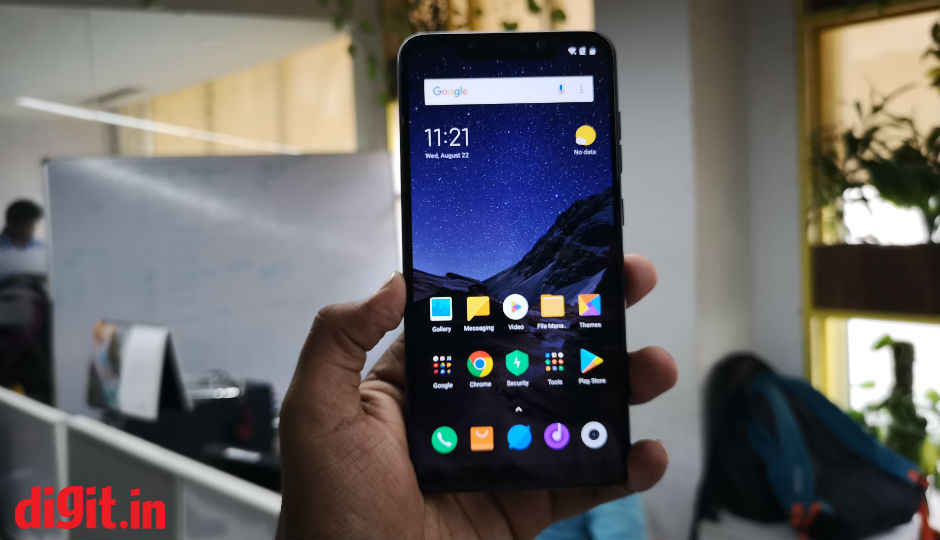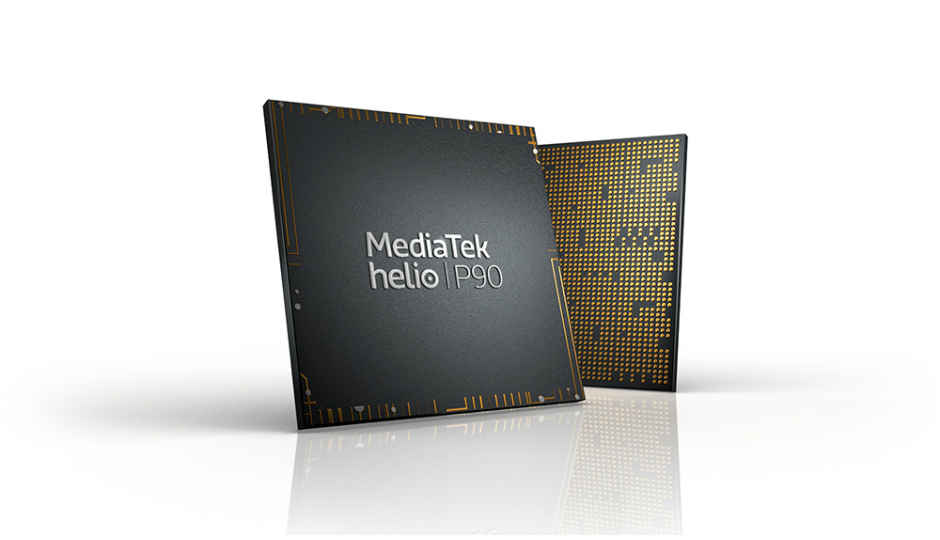 For the very first time, OnePlus has collaborated with the famous car manufacturer “Mclaren”. The latest OnePlus 6T is stylish in terms of design as it carries the same signature color, which Mclaren has been using in its cars for almost 20 years or more than that. It is also the first device that comes with 10GB RAM. However, the Lenovo is all set to launch its Z5 Pro GT, which will be the world’s first device to come with 12GB RAM. On the other hand, we have the Huawei Mate 20 Pro that has a triple camera set up at the back and is powered by Kirin 980 processor, which should be powerful. Let’s do a quick specs comparison first to know whether the device is enough to beat OnePlus 6T in terms of hardware at least on paper. Let’s begin with comparing these two devices in detail. The Huawei Mate 20 Pro sports a 6.39-inch display that offers a resolution of 1440 x 3120 pixels. On the other side, the OnePlus 6T Mclaren edition comes with a 6.4-inch display that offers a resolution of 1080 x 2340 pixels. When it comes to the performance, the OnePlus 6T Mclaren edition is powered by the latest Qualcomm Snapdragon 845 processor, which is paired with 10GB RAM and 256GB internal memory, which is not expandable, while the Huawei Mate 20 Pro is powered by a Kirin 980 octa-core processor, which is clocked at 2.36GHz. The phone packs 6GB RAM and 128GB internal memory that is expandable to up to 256GB via a microSD card. As far as the cameras are concerned, the OnePlus 6T Mclaren edition has a dual camera set up at the back, same as the regular OnePlus 6T. It has 16MP + 20MP dual rear camera along with a 16MP unit on the front. On the other hand, the Huawei Mate 20 Pro comes with a triple 40MP + 20MP + 8MP rear cameras and 24MP sensor on the front. The OnePlus Mclaren edition box also contains a Warp charger 30, which according to the company can provide a full day battery in just 20 mins of charging. The OnePlus 6T Mclaren edition has been launched in India at a price of Rs 50,999, while you can get the Huawei Mate 20 Pro in India for Rs 69,990.
For the very first time, OnePlus has collaborated with the famous car manufacturer “Mclaren”. The latest OnePlus 6T is stylish in terms of design as it carries the same signature color, which Mclaren has been using in its cars for almost 20 years or more than that. It is also the first device that comes with 10GB RAM. However, the Lenovo is all set to launch its Z5 Pro GT, which will be the world’s first device to come with 12GB RAM. On the other hand, we have the Huawei Mate 20 Pro that has a triple camera set up at the back and is powered by Kirin 980 processor, which should be powerful. Let’s do a quick specs comparison first to know whether the device is enough to beat OnePlus 6T in terms of hardware at least on paper. Let’s begin with comparing these two devices in detail. The Huawei Mate 20 Pro sports a 6.39-inch display that offers a resolution of 1440 x 3120 pixels. On the other side, the OnePlus 6T Mclaren edition comes with a 6.4-inch display that offers a resolution of 1080 x 2340 pixels. When it comes to the performance, the OnePlus 6T Mclaren edition is powered by the latest Qualcomm Snapdragon 845 processor, which is paired with 10GB RAM and 256GB internal memory, which is not expandable, while the Huawei Mate 20 Pro is powered by a Kirin 980 octa-core processor, which is clocked at 2.36GHz. The phone packs 6GB RAM and 128GB internal memory that is expandable to up to 256GB via a microSD card. As far as the cameras are concerned, the OnePlus 6T Mclaren edition has a dual camera set up at the back, same as the regular OnePlus 6T. It has 16MP + 20MP dual rear camera along with a 16MP unit on the front. On the other hand, the Huawei Mate 20 Pro comes with a triple 40MP + 20MP + 8MP rear cameras and 24MP sensor on the front. The OnePlus Mclaren edition box also contains a Warp charger 30, which according to the company can provide a full day battery in just 20 mins of charging. The OnePlus 6T Mclaren edition has been launched in India at a price of Rs 50,999, while you can get the Huawei Mate 20 Pro in India for Rs 69,990.from Latest Technology News http://bit.ly/2ThIirW
 Highlights: Xiaomi Poco F2 spotted on Geekbench The phone was seen running Android Pie 9.0 Seen powered by Snapdragon 845 SoC Xiaomi Poco F1 was one of the most appealing smartphones of 2018 because it offered flagship specs at a mid-range smartphone price point. It seems that riding the success of the smartphone, Xiaomi’s sub-brand is planning to launch the second edition of the smartphone. A smartphone labelled as “Xiaomi POCO F2” has been spotted on Geekbench. As suggested by the name, this smartphone could be the successor to the Poco F1. The Geekbench listing has revealed some key information about Poco F2’s CPU, RAM and OS. The listing shows the Poco F2 is powered by Qualcomm Snapdragon 845 chipset coupled with 6GB RAM. The Poco F1 also features the same configuration under the hood but the Poco F2 is seen running Android 9 Pie OS. In the single-core benchmarking test, the handset scores 2321 points and in the multi-core test, it scores 7564. If true, the Xiaomi Poco F2 is expected to have upgrades in other departments like display, camera and battery. Recently, Poco India announced that the company had brought the armoured back panel to the 6GB RAM and 128GB storage variant of the device. The device is now available for purchase on Mi.com and Flipkart. Earlier, only the 8GB RAM + 256GB storage variant was available with the armoured back. Poco F1 Specifications The Poco F1 is powered by the Qualcomm Snapdragon 845 octa-core processor and sports a 6.18-inch Full HD+ IPS LCD display with a 19:9 display aspect ratio. The display is protected by a Corning Gorilla Glass and there is a notch on top which houses the earpiece and a 20MP camera, among other sensors. One of the highlights of the device is liquid cooling technology, which is claimed to keep the device temperature under check. The Poco F1 comes in three variants, one with 6GB RAM + 64GB storage, 6GB RAM + 128GB storage, and another with 8GB RAM + 256GB storage and a special Armoured Edition with 8GB RAM + 256GB storage variant. It houses a 4,000mAh battery, which can be charged via a USB Type-C port. It also supports Quick Charge 3.0 technology and comes with a fast charger. In the camera department, the Poco F1 has a dual camera setup at the back: The primary camera is a 12MP Sony IMX 363 lens with an f/1.8 aperture, and the secondary camera has a 5MP sensor. On the front, there is a 20MP lens that supports Pixel Binning technology. There are two speakers for delivering surround sound effect on the device's front and while one is located at the chin, the other one doubles as the earpiece. Both speakers have a Dual Smart Power Amplifier with Dirac HD Sound. Related Read: Poco F1 Review
Highlights: Xiaomi Poco F2 spotted on Geekbench The phone was seen running Android Pie 9.0 Seen powered by Snapdragon 845 SoC Xiaomi Poco F1 was one of the most appealing smartphones of 2018 because it offered flagship specs at a mid-range smartphone price point. It seems that riding the success of the smartphone, Xiaomi’s sub-brand is planning to launch the second edition of the smartphone. A smartphone labelled as “Xiaomi POCO F2” has been spotted on Geekbench. As suggested by the name, this smartphone could be the successor to the Poco F1. The Geekbench listing has revealed some key information about Poco F2’s CPU, RAM and OS. The listing shows the Poco F2 is powered by Qualcomm Snapdragon 845 chipset coupled with 6GB RAM. The Poco F1 also features the same configuration under the hood but the Poco F2 is seen running Android 9 Pie OS. In the single-core benchmarking test, the handset scores 2321 points and in the multi-core test, it scores 7564. If true, the Xiaomi Poco F2 is expected to have upgrades in other departments like display, camera and battery. Recently, Poco India announced that the company had brought the armoured back panel to the 6GB RAM and 128GB storage variant of the device. The device is now available for purchase on Mi.com and Flipkart. Earlier, only the 8GB RAM + 256GB storage variant was available with the armoured back. Poco F1 Specifications The Poco F1 is powered by the Qualcomm Snapdragon 845 octa-core processor and sports a 6.18-inch Full HD+ IPS LCD display with a 19:9 display aspect ratio. The display is protected by a Corning Gorilla Glass and there is a notch on top which houses the earpiece and a 20MP camera, among other sensors. One of the highlights of the device is liquid cooling technology, which is claimed to keep the device temperature under check. The Poco F1 comes in three variants, one with 6GB RAM + 64GB storage, 6GB RAM + 128GB storage, and another with 8GB RAM + 256GB storage and a special Armoured Edition with 8GB RAM + 256GB storage variant. It houses a 4,000mAh battery, which can be charged via a USB Type-C port. It also supports Quick Charge 3.0 technology and comes with a fast charger. In the camera department, the Poco F1 has a dual camera setup at the back: The primary camera is a 12MP Sony IMX 363 lens with an f/1.8 aperture, and the secondary camera has a 5MP sensor. On the front, there is a 20MP lens that supports Pixel Binning technology. There are two speakers for delivering surround sound effect on the device's front and while one is located at the chin, the other one doubles as the earpiece. Both speakers have a Dual Smart Power Amplifier with Dirac HD Sound. Related Read: Poco F1 Review The Apple has launched three new smartphones this year - iPhone XS, iPhone XR, and iPhone XS Max among, which the iPhone XS Max is the most expensive one. The device is powered by the latest Apple A12 Bionic chipset. On the other hand, we have the Huawei Mate 20 Pro, which is recently launched in India last month with a triple camera set up at the back. Let’s do a quick specs comparison to know which device is more powerful when it comes to hardware. Let’s begin with comparing the display of these two phones in detail. The Huawei Mate 20 Pro is quite big as it sports a 6.39-inch display that offers a resolution of 1440 x 3120 pixels. When it comes to iPhone XS Max, it is the first smartphone by Apple that features a huge 6.5-inch display, which offers a resolution of 1242 x 2688 pixels. So, if you’re looking for a phone with a bigger screen then Apple iPhone XS Max sports a slightly bigger display in compared to Mate 20 Pro. However, the difference is not that big but still quite noticeable. When it comes to the performance, the Huawei Mate 20 Pro is powered by the company’s own Kirin 970 octa-core processor, which is clocked at 2.36GHz. The device packs 6GB RAM and 128GB internal memory, which is expandable to up to 256GB via a microSD card. On the other hand, the Apple iPhone XS Max is powered by the latest A12 Bionic chipset, which is coupled with 4GB RAM and 64GB internal memory. The device is also available in 256GB and 512GB storage models. As far as the cameras are concerned, the Huawei Mate 20 Pro has a triple camera set up at the back, which is also the main highlight of this smartphone. It has 40MP + 20MP + 8MP rear cameras along with a 24MP front-facing camera. On the other hand, the Apple iPhone XS Max features the same 12MP dual sensors at the back with a 7MP sensor on the front. The Apple iPhone XS Max is almost Rs 40,000 (appx) more expensive than the Huawei Mate 20 Pro. The phone is available in India for Rs 1,04,900, while you can get the Huawei Mate 20 Pro for Rs 69,990 in India.
The Apple has launched three new smartphones this year - iPhone XS, iPhone XR, and iPhone XS Max among, which the iPhone XS Max is the most expensive one. The device is powered by the latest Apple A12 Bionic chipset. On the other hand, we have the Huawei Mate 20 Pro, which is recently launched in India last month with a triple camera set up at the back. Let’s do a quick specs comparison to know which device is more powerful when it comes to hardware. Let’s begin with comparing the display of these two phones in detail. The Huawei Mate 20 Pro is quite big as it sports a 6.39-inch display that offers a resolution of 1440 x 3120 pixels. When it comes to iPhone XS Max, it is the first smartphone by Apple that features a huge 6.5-inch display, which offers a resolution of 1242 x 2688 pixels. So, if you’re looking for a phone with a bigger screen then Apple iPhone XS Max sports a slightly bigger display in compared to Mate 20 Pro. However, the difference is not that big but still quite noticeable. When it comes to the performance, the Huawei Mate 20 Pro is powered by the company’s own Kirin 970 octa-core processor, which is clocked at 2.36GHz. The device packs 6GB RAM and 128GB internal memory, which is expandable to up to 256GB via a microSD card. On the other hand, the Apple iPhone XS Max is powered by the latest A12 Bionic chipset, which is coupled with 4GB RAM and 64GB internal memory. The device is also available in 256GB and 512GB storage models. As far as the cameras are concerned, the Huawei Mate 20 Pro has a triple camera set up at the back, which is also the main highlight of this smartphone. It has 40MP + 20MP + 8MP rear cameras along with a 24MP front-facing camera. On the other hand, the Apple iPhone XS Max features the same 12MP dual sensors at the back with a 7MP sensor on the front. The Apple iPhone XS Max is almost Rs 40,000 (appx) more expensive than the Huawei Mate 20 Pro. The phone is available in India for Rs 1,04,900, while you can get the Huawei Mate 20 Pro for Rs 69,990 in India. Highlights: Porsche will launch the all-electric Taycan sometime next year Prices expected to start at $90,000 (Rs 62,99,100 approx) If you read our story on the upcoming Audi e-tron GT concept, the chances are that you remember the name Porsche Taycan. It’s the German carmaker’s all-electric sports car that’s scheduled to hit showrooms sometime next year. The most recent news around it is that it will come in at least three variants (if not more) and sell for a starting price of $90,000 (Rs 62,99,100 approx). One of the three variants is expected to be the Taycan Turbo, a performance variant that’s expected to start from $130,000 (Rs 90,94,150 approx). When American writer and rally race driver Alex Roy wrote to Porsche enquiring about the upcoming Taycan, he received the following response: “We are expecting to see the new model in about one year from now. Porsche is going to build three models, the Taycan, Taycan 4s and the Taycan Turbo.” This means the Taycan will be the base variant, the Taycan 4s will be the four-wheel drive variant, and the Taycan Turbo, the performance variant. That Porsche should choose to call the performance variant of even its electric car ‘Turbo’ is peculiar because it’s a term generally reserved for Porsche cars powered by an internal combustion engine. Turbo, in general, is short for turbocharged, an engine device one can’t find in an electric car. However, with most of the cars in Porsche’s stable being turbocharged, the name eventually evolved to refer to the very best variant available in any Porsche model. It seems Porsche is carrying that ideology forward without any change in vocabulary. Alex Roy later tweeted the response and penned his thoughts down in an op-ed article on The Drive. In it, he confesses he first hated the idea of Porsche using the name ‘Turbo’ for an electric car but came to realise that Porsche isn’t a pure EV brand. It would make every bit of sense for Porsche to carry the ‘Turbo’ name forward for the top-of-the-line variants of its cars whether they’re electric, hybrid, or otherwise. The Porsche Taycan (née Mission E) shares its new 800-volt charging architecture with the Audi e-tron GT. Using its two permanently excited synchronous motors and 270 Wh/kg Li-ion battery, the Taycan puts out 600 horsepower and has a claimed range of 500 kilometres. The Taycan can do a claimed 0-to-100 kmph time of 3.5 seconds. The Porsche Taycan is expected to go on sale sometime in 2019. It appears the performance version of the Porsche Taycan EV will be branded “Turbo”. Because ICE nomenclature is how one converts customers to EV.
Highlights: Porsche will launch the all-electric Taycan sometime next year Prices expected to start at $90,000 (Rs 62,99,100 approx) If you read our story on the upcoming Audi e-tron GT concept, the chances are that you remember the name Porsche Taycan. It’s the German carmaker’s all-electric sports car that’s scheduled to hit showrooms sometime next year. The most recent news around it is that it will come in at least three variants (if not more) and sell for a starting price of $90,000 (Rs 62,99,100 approx). One of the three variants is expected to be the Taycan Turbo, a performance variant that’s expected to start from $130,000 (Rs 90,94,150 approx). When American writer and rally race driver Alex Roy wrote to Porsche enquiring about the upcoming Taycan, he received the following response: “We are expecting to see the new model in about one year from now. Porsche is going to build three models, the Taycan, Taycan 4s and the Taycan Turbo.” This means the Taycan will be the base variant, the Taycan 4s will be the four-wheel drive variant, and the Taycan Turbo, the performance variant. That Porsche should choose to call the performance variant of even its electric car ‘Turbo’ is peculiar because it’s a term generally reserved for Porsche cars powered by an internal combustion engine. Turbo, in general, is short for turbocharged, an engine device one can’t find in an electric car. However, with most of the cars in Porsche’s stable being turbocharged, the name eventually evolved to refer to the very best variant available in any Porsche model. It seems Porsche is carrying that ideology forward without any change in vocabulary. Alex Roy later tweeted the response and penned his thoughts down in an op-ed article on The Drive. In it, he confesses he first hated the idea of Porsche using the name ‘Turbo’ for an electric car but came to realise that Porsche isn’t a pure EV brand. It would make every bit of sense for Porsche to carry the ‘Turbo’ name forward for the top-of-the-line variants of its cars whether they’re electric, hybrid, or otherwise. The Porsche Taycan (née Mission E) shares its new 800-volt charging architecture with the Audi e-tron GT. Using its two permanently excited synchronous motors and 270 Wh/kg Li-ion battery, the Taycan puts out 600 horsepower and has a claimed range of 500 kilometres. The Taycan can do a claimed 0-to-100 kmph time of 3.5 seconds. The Porsche Taycan is expected to go on sale sometime in 2019. It appears the performance version of the Porsche Taycan EV will be branded “Turbo”. Because ICE nomenclature is how one converts customers to EV. Key Highlights: The MediaTek Helio P90 scored 162861 on AnTuTu An unknown device with 6GB RAM and Android 9 Pie was used for the benchmark test The scores are in the same league as the Snapdragon 670 and Snapdragon 710 The upper mid-range MediaTek Helio P90 SoC that the company recently announced at an event in Shanghai has surfaced in benchmarks. It scored 162861 on AnTuTu, putting it in the same league as the Qualcomm Snapdragon 670 or the Snapdragon 710. The score was achieved with an unknown device running 6GB of RAM and Android 9 Pie. To compare, smartphones with Snapdragon 670 has scored around 150k on AnTuTu while the Snapdragon 710-powered phones like the Nokia 8.1 has scored around 170k. While the synthetic benchmark number mean little when it comes to actual performance, a high number on AnTuTu is often used by OEMs to market their devices. Furthermore, we have seen smartphones unfairly boosting benchmark scores to show performance higher than their rivals. Nevertheless, the Helio P90 touts two high-performance Cortex A75 cores clocked at 2.2GHz along with six high-efficiency Cortex A55 cores clocked at 2.0GHz. MediaTek claims a 4.6X boost in performance over the previous Helio P60 and Helio P70. The octa-core CPU is paired with a PowerVR GM 9446 GPU and a fast LPDDR4X memory controller. Between the eight cores of the CPU, an L3 RAM is shared. Furthermore, the Helio P90 has an in-built “AI accelerator” for enhanced image processing. On the other hand, the Snapdragon 670 is considered as the successor to the Snapdragon 660 that featured in a range of mid-range devices this year. It touts Kryo 360 CPU with a 15 percent performance boost over its predecessor and also features the company’s proprietary AI Engine. The Snapdragon 710 is positioned as a bridge between the mid-range 6-series Snapdragon chipsets and the flagship 8-series lineup. With maximum clock speed of 2.2GHz, the Snapdragon 710 also features the Kryo 360 CPU but comes with a better Adreno 616 GPU. Related Links: MediaTek Helio P90 SoC with APU 2.0 AI architecture, up to 48MP camera support announced Google Pixel 3 Lite with Snapdragon 670 and 3.5mm audio jack leaks online Qualcomm Snapdragon 710 mobile platform with Kryo 360 cores unveiled
Key Highlights: The MediaTek Helio P90 scored 162861 on AnTuTu An unknown device with 6GB RAM and Android 9 Pie was used for the benchmark test The scores are in the same league as the Snapdragon 670 and Snapdragon 710 The upper mid-range MediaTek Helio P90 SoC that the company recently announced at an event in Shanghai has surfaced in benchmarks. It scored 162861 on AnTuTu, putting it in the same league as the Qualcomm Snapdragon 670 or the Snapdragon 710. The score was achieved with an unknown device running 6GB of RAM and Android 9 Pie. To compare, smartphones with Snapdragon 670 has scored around 150k on AnTuTu while the Snapdragon 710-powered phones like the Nokia 8.1 has scored around 170k. While the synthetic benchmark number mean little when it comes to actual performance, a high number on AnTuTu is often used by OEMs to market their devices. Furthermore, we have seen smartphones unfairly boosting benchmark scores to show performance higher than their rivals. Nevertheless, the Helio P90 touts two high-performance Cortex A75 cores clocked at 2.2GHz along with six high-efficiency Cortex A55 cores clocked at 2.0GHz. MediaTek claims a 4.6X boost in performance over the previous Helio P60 and Helio P70. The octa-core CPU is paired with a PowerVR GM 9446 GPU and a fast LPDDR4X memory controller. Between the eight cores of the CPU, an L3 RAM is shared. Furthermore, the Helio P90 has an in-built “AI accelerator” for enhanced image processing. On the other hand, the Snapdragon 670 is considered as the successor to the Snapdragon 660 that featured in a range of mid-range devices this year. It touts Kryo 360 CPU with a 15 percent performance boost over its predecessor and also features the company’s proprietary AI Engine. The Snapdragon 710 is positioned as a bridge between the mid-range 6-series Snapdragon chipsets and the flagship 8-series lineup. With maximum clock speed of 2.2GHz, the Snapdragon 710 also features the Kryo 360 CPU but comes with a better Adreno 616 GPU. Related Links: MediaTek Helio P90 SoC with APU 2.0 AI architecture, up to 48MP camera support announced Google Pixel 3 Lite with Snapdragon 670 and 3.5mm audio jack leaks online Qualcomm Snapdragon 710 mobile platform with Kryo 360 cores unveiled Key Highlights: Google will reportedly launch its Pixel 3 Lite and Pixel 3 XL Lite phones in Spring 2019 The phones could be launched in partnership with Verizon in the US The two handsets are speculated to be less powerful variants of the current Pixel 3 phones Google is reportedly working on a Lite variant of its Pixel 3 smartphones and could unveil them soon. However, there is no official confirmation of the same but Android Police reports, citing sources close to the development, that in the US, Google will be launching the Pixel 3 Lite and the Pixel 3 XL Lite smartphones by Spring 2019. As per the report, Google might be teaming up with Verizon for launching the smartphones but there’s no information on their pricing or exact launch dates. Some reports on the two phones suggest that they might be less powerful variants of the Pixel 3 and Pixel 3 XL with mid-range processors but could be announced with similar imaging capabilities. The Pixel 3 XL Lite was previously leaked in a video render that hints at a 6-inch display as compared to Pixel 3 Lite’s 5.5-inch screen. Both smartphones are expected to come with a full HD+ resolution screen with an aspect ratio of 18.5:9. The larger variant is also said to not feature a notch and could be announced with a 3.5mm headphone jack. Both the Lite variants of the Pixel 3 are said to be available in only white and black colours. The Pixel 3 XL Lite could be powered by the Snapdragon 710 SoC, while the Pixel 3 Lite might be launched running on Snapdragon 670 SoC, coupled with 4GB RAM and options of two storage variants, 32GB and 64GB. The Pixel 3 Lite is expected to have a 2915 mAh battery and there is no info on the battery capacity of the larger Lite variant. The Pixel 3 Lite and Pixel 3 XL Lite are speculated to be priced between $400 and 500 (Rs 28,000 and Rs 35,000 approx). Related Reads: Leaked Google Pixel 3 Lite case reveal 3.5mm headphone jack, single colour finish Google Pixel 3 Lite XL leaked in a 360-degree video, shows notch-less display
Key Highlights: Google will reportedly launch its Pixel 3 Lite and Pixel 3 XL Lite phones in Spring 2019 The phones could be launched in partnership with Verizon in the US The two handsets are speculated to be less powerful variants of the current Pixel 3 phones Google is reportedly working on a Lite variant of its Pixel 3 smartphones and could unveil them soon. However, there is no official confirmation of the same but Android Police reports, citing sources close to the development, that in the US, Google will be launching the Pixel 3 Lite and the Pixel 3 XL Lite smartphones by Spring 2019. As per the report, Google might be teaming up with Verizon for launching the smartphones but there’s no information on their pricing or exact launch dates. Some reports on the two phones suggest that they might be less powerful variants of the Pixel 3 and Pixel 3 XL with mid-range processors but could be announced with similar imaging capabilities. The Pixel 3 XL Lite was previously leaked in a video render that hints at a 6-inch display as compared to Pixel 3 Lite’s 5.5-inch screen. Both smartphones are expected to come with a full HD+ resolution screen with an aspect ratio of 18.5:9. The larger variant is also said to not feature a notch and could be announced with a 3.5mm headphone jack. Both the Lite variants of the Pixel 3 are said to be available in only white and black colours. The Pixel 3 XL Lite could be powered by the Snapdragon 710 SoC, while the Pixel 3 Lite might be launched running on Snapdragon 670 SoC, coupled with 4GB RAM and options of two storage variants, 32GB and 64GB. The Pixel 3 Lite is expected to have a 2915 mAh battery and there is no info on the battery capacity of the larger Lite variant. The Pixel 3 Lite and Pixel 3 XL Lite are speculated to be priced between $400 and 500 (Rs 28,000 and Rs 35,000 approx). Related Reads: Leaked Google Pixel 3 Lite case reveal 3.5mm headphone jack, single colour finish Google Pixel 3 Lite XL leaked in a 360-degree video, shows notch-less display 